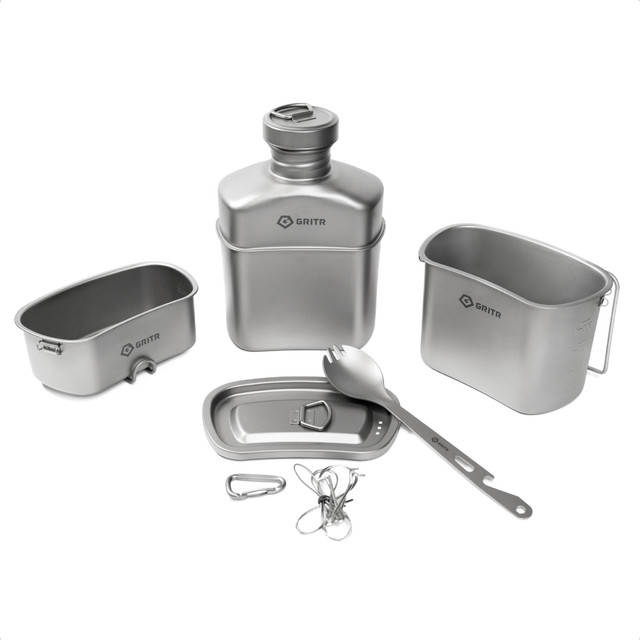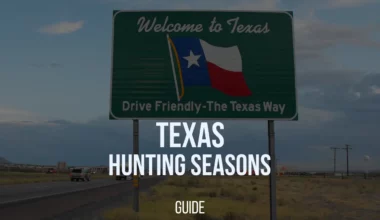With countless camping cook sets and gear out there, it’s easy to miss out on a great cookware setup that will perfectly fit your needs and trip conditions or, worse, overpay for something that makes you wonder, “Why did I spend so much money on this?”. Here’s a quick guide to help you choose the perfect campaign cookware for your next backpacking trip.
Understand Your Cooking Style
- Are you car camping? If your trip involves pulling right up to the campsite, gear weight and bulk aren’t big issues. Go ahead and bring that trusty cast iron skillet or a three-pot stainless steel setup.
- Backpacking? Every ounce matters. Opt for ultralight titanium pots or anodized aluminum cookware. Look for compact nesting designs to save precious bag space.
- Cooking for two or a group? Versatility is key here. A set with various pots, pans, and a big “family-style” pot will ensure you’re covered.
- Love minimalism? Maybe all you need is a single multipurpose pot or a trusty titanium mug.
Pro Tip: Avoid buying a bulky or expensive full cook set if you’re just starting out. Many campers realize they only use half the pieces in these sets. Start simple and build as you go.
Material Matters
The material your cooking gear is made from affects everything, from how well your food cooks to how frustrating cleanup will be. Here’s what to know:
Stainless Steel
- Pros: Bombproof and budget-friendly. Great for cooking over open flames since it resists warping.
- Cons: Can be heavy. Prone to food sticking unless generously oiled.
- Best For: Car camping or rugged trips.
Anodized Aluminum
- Pros: Lightweight and excellent heat conductors, reducing cold spots.
- Cons: Though better than plain aluminum, still not as durable as steel.
- Best For: Campers who value weight to performance balance.
Titanium
- Pros: Ultrathin, lightweight, and virtually indestructible.
- Cons: Expensive. Has questionable heat distribution; great for boiling water, not sauteing mushrooms.
- Best For: Hardcore ultralighters.

GRITR Titanium Canteen Mess Kit
$129.99
Price accurate at time of writing
Specs:
- 38.4 oz Single-Walled Canteen with lid
- 25.4 oz Mess Tin and 13.5 oz Cup can be used as pots or bowls for cooking on an open fire
- 7.7" Titanium Spork can be used as a fork, spoon, and bottle opener at the same time
- All camping kitchen utensils come packed in a portable Nylon Storage Bag with an adjustable strap
- Aluminium Carabiner allows to attach the storage bag to a belt or backpack
Cast Iron
- Pros: Brings unbeatable flavor and cooking versatility for dishes like bacon, cornbread, and steaks.
- Cons: Super heavy. Re-seasoning required if mishandled. Don’t even think about packing this for a long hike.
- Best For: Car camping chefs with a taste for gourmet meals.
Pro tip: Avoid non-stick coatings (like Teflon) unless you’re entirely car-based. It scratches too easily in wild camping, and is often unnecessary if you’ve mastered cooking with oil or on stainless.
Backpacker Essentials for Your Camp Kitchen
Your setup doesn’t have to include every shiny gadget on the market, but there are a few must-haves that will level up your outdoor cooking experience:
Pot
Whether you’re boiling water, cooking pasta, or whipping up soup, no camp kitchen is complete without the pot.
Here’s how to choose the right one:
Material:
- Titanium pot is perfect if you’re going ultralight. Just stick to simple tasks like boiling water.
- Aluminum pot balances lightness and durability while distributing heat evenly. Go anodized for scratch resistance.
- Stainless Steel is heavier but built to endure more rugged use.
- Non-stick pots made of ceramic-coated aluminum make cleaning a breeze but keep in mind that non-stick coatings require extra care to avoid scratches.
Capacity:
- Solo Hikers – Pots between 600-900 ml are sufficient, especially if you’re focused on boiling water for dehydrated meals.
- Pairs or Small Groups – Opt for a 1.5-2.5L pot, providing flexibility for shared cooking and bigger meal preparations.
- Larger Groups – Bring along multiple pots.
Pro Tip: Pairing a 900 ml titanium pot with a smaller 600 ml mug gives solo hikers great versatility without weighing them down.
Shape:
Wide pots deliver better stability on small camp stoves and distribute heat more evenly, making them easier for stirring and eating directly from. Tall pots, while less stable, can accommodate compact gas canisters inside to save packing space.
Pro tip: If you’re boiling water for rehydrated meals, save weight by decanting water into the meal’s packaging rather than cooking directly in the pot. This method works wonders for solo hikers who favor compact pots.
Mug / Cup
Morning coffee is a sacred moment out on the trail, and your choice of drinking vessel matters more than you think.
Options:
- Titanium Mugs: Lightweight, durable, and able to double as a boil-pot for water.
- Insulated Stainless Steel Mugs: Perfect for keeping beverages warm during cold mornings.
- Collapsible Silicone Cups: Space-saving for the ultimate minimalist.

GRITR Titanium Camping Mug
$24.99 - $29.99
Price accurate at time of writing
Specs:
- Made of Titanium that is lightweight, corrosion-resistant, and durable
- Conducts heat rapidly and cools fast
- Features folding handles
- Can be used as a small boiling pot, tea or coffee cup, water mug, or outdoor cooking gear
- Available in 2 sizes - 15.2 fl oz (450 ml) and 25.4 fl oz (750 ml)
Pan / Skillet
Not every backpacker needs a skillet, but if you love the thought of crisping bacon in the wild, it’s a worthy addition.
- Look for foldable handles for easier packing.
- Opt for stainless steel for durability or aluminum to cut weight.
- Skip non-stick pans for campfire cooking.
Utensils
Even the best camp meals won’t work without functional utensils. Recommended options:
- Titanium sporks with long handles to reach the bottom of freeze-dried meal pouches.
- 3-in-1 utensils that combine spoon, fork, and knife edges.
- Silicone utensils for scratch-prone cookware.
Stove
Your stove is the backbone of your outdoor cooking gear. Choosing the right one depends on your destination, conditions, and cooking style.
Types of Backpacking Stoves
- Canister Stoves: Lightweight, user-friendly, and great for quick boils in mild conditions. Stellar for short trips, but may underperform in freezing temperatures.
- Alcohol Stoves: Ultralight and simple, making them a favorite for thru-hikers. Best used for boiling water rather than simmering meals.
- Liquid Fuel Stoves: High power and versatility, suitable for extremely cold environments or melting large quantities of snow. Slightly heavier and more technical to operate.
What do you want to do with your stove?
- Only boiling water? A lightweight option like an alcohol stove is ideal for efficiency-focused minimalists.
- Cooking meals from scratch or frying? Look for stoves with better flame adjustability, like canister stoves or liquid fuel stoves.
Where will you use your stove?
- Regions with fuel restrictions: Some parks prohibit open-flame stoves like twig burners year-round. Gas canisters with shutoff valves may be required.
- Cold climates: At temperatures below 17°F, some stoves struggle to operate efficiently. Liquid fuel systems are reliable in extreme cold.
- Remote areas: Gas canisters may not be stocked in less-traveled regions, while alcohol and liquid fuels are easier to source.
Final Thoughts
Start small and stay flexible. Buy a good pre-made backpacking cooking set or mix and match pieces that suit your needs. Look for gear that nests together (like packing your stove and mug inside your pot) to save space. And don’t stress if your setup doesn’t look “Instagram-perfect”—function always beats aesthetics when it comes to backcountry survival.








